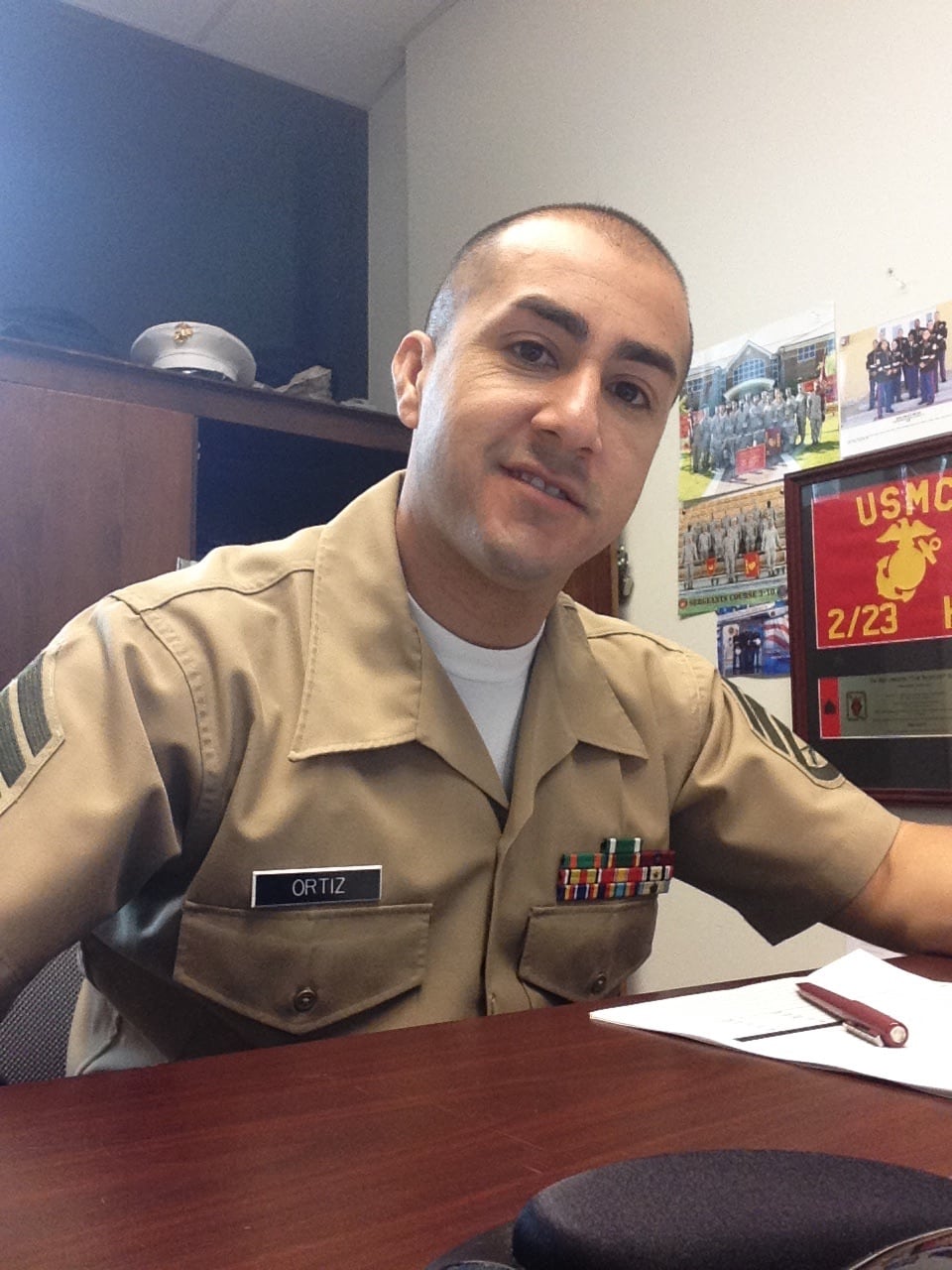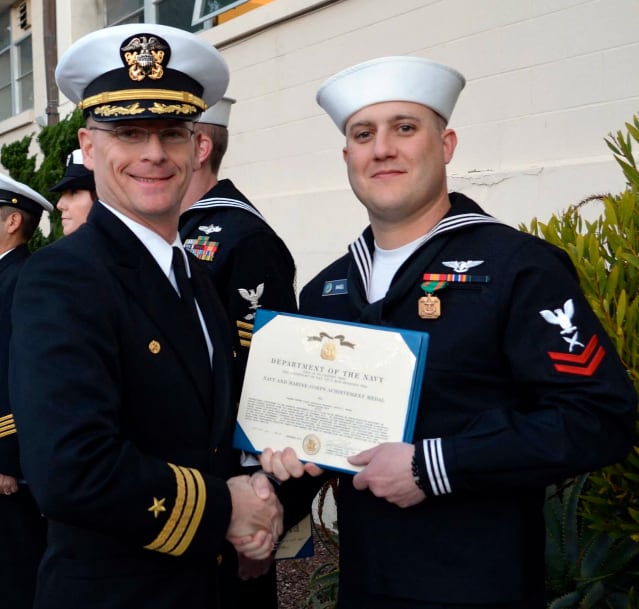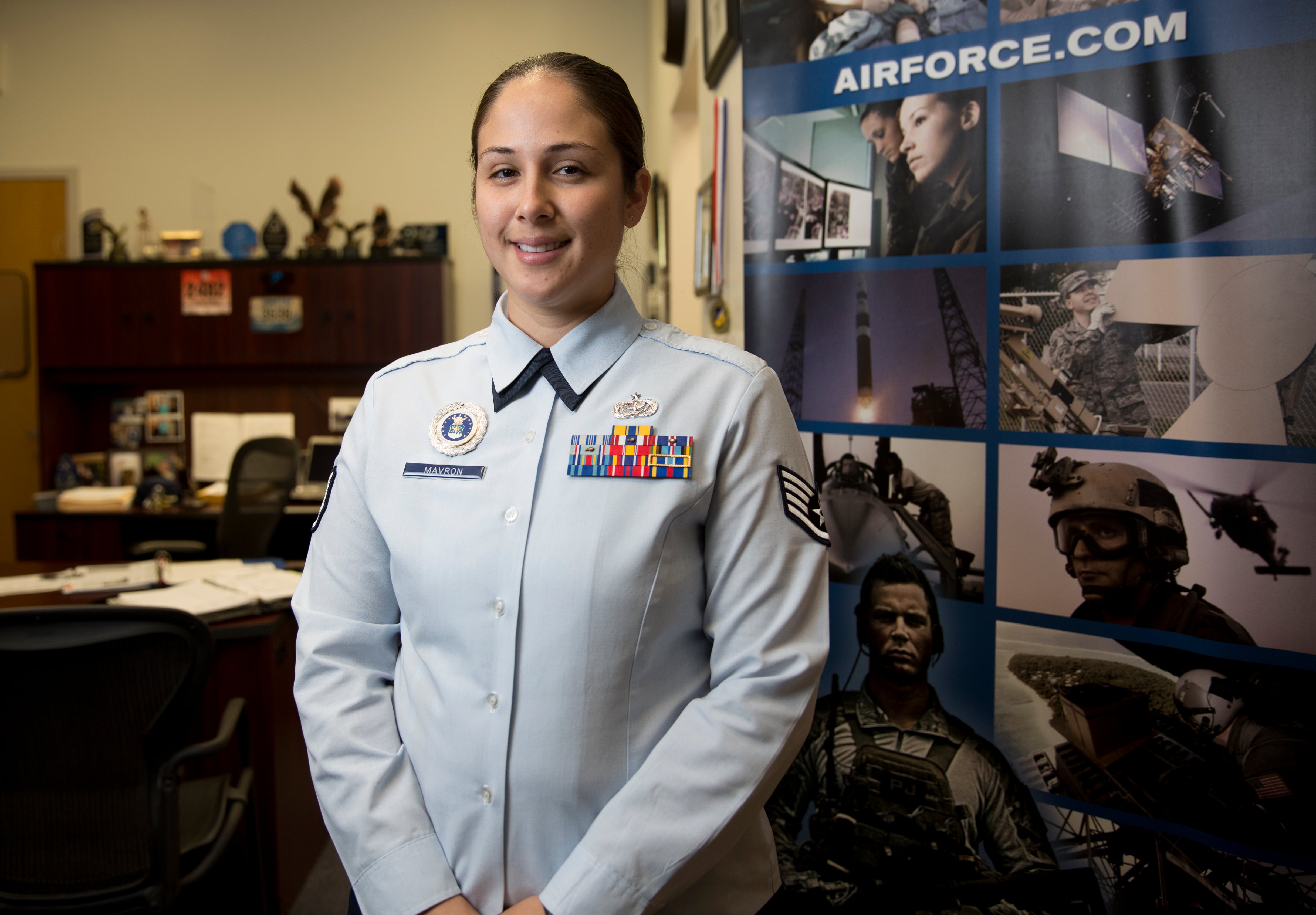Few people join the military with the idea of getting rich.
But there are plenty of service members who are well on their way to comfortable retirements.
When Military Times put out a call for volunteers to have their finances reviewed by a financial professional, more than 80 responded. Their ranks, family status and financial situations vary widely. But the majority said they don't know whether they're on the right track.
Many young military families struggle. But many service members not only support their families, but manage to save money. For example, one 25-year-old married E-4 sailor in this project is on track to be a millionaire well before he turns 60.
The participants will inspire others in the military community to take a look at their own finances in comparison.
While we chose eight troops in a variety of circumstances, one emerging theme was the importance of building emergency funds. Financial experts consistently emphasize the importance of socking away at least three months of living expenses — if not more — in a separate savings or money market account, a point underscored by the examples of several participating troops who lacked sufficient emergency funds.
The consistent advice: Without that cushion, an emergency may force you to add to your debt load — which will put a far bigger dent in your wallet in the long run.
Participants also gained insights into changes they can make to improve their financial position, everything from minor tweaks to major overhauls. One family learned it was double-paying for a home insurance policy; dropping it will save them about $1,000 a year.
In some cases, there is no magic solution. But even the sailor with $168,000 in student loans picked up some tips about chipping away at his massive debt. And he hopes his situation might alert others to the consequences of being saddled with so much education debt.
Certified financial planners from First Command, Navy Federal Financial Group and USAA reviewed participating troops' finances and provided advice and guidance. Then we asked the service members what steps they'll take in the wake of that advice.
While these three organizations have a long history of working with the military community, plenty of other competent financial planners are out there. The Defense Department also provides a variety of free services and tools to help service members and their families make the best of their finances.
Many military installations have personal financial managers available, and Military OneSource has counselors who can help service members and their families establish a clear picture of their financial situation, prioritize their financial goals, and identify strategies to reach those goals. One Army financial readiness program specialist said the experts can do a soup-to-nuts evaluation of a service member's complete financial picture, including investment mixes — and are so popular, he added, that they are usually booked three to four weeks in advance.
Some of the participants in our project may be retiring or leaving the service within a few years, but all are thinking about the long term — and that's one key to their success. You'll see the results of saving methodically over a long time, and the potential of growing savings and investments for those who are younger.
While some in this project know they'll have a military retirement check, many people in the military today understand that the downsizing of the force could at some point derail their hopes of a military retirement. Preparations for that possibility are best done earlier, rather than later. And even those who make it to full retirement may find the compensation does not cover all living expenses.
USAA certified financial planner JJ Montanaro said he saw a common thread among two families he worked with in this project: "They are attacking their finances in the same way military operations are conducted — in a thoughtful, careful way and with a detailed plan and goal," he said.
"What works in the military works with their money. They're inspirational to me."
Air Force Lt. Col. Scott Koeckritz
Fort Drum, N.Y.
With 24 years in service, Lt. Col. Scott Koeckritz, 43, and his wife, Amber, 36, are thinking about life after the military.
"We are getting closer to retirement and would like to see what we should be doing to prepare, see if our investments are enough — I'm sure they are not — figure out how to buy a house after retiring, and start a college fund for our youngest," Amber Koeckritz said.
Amber's employer allowed her to keep her job when she moved to Fort Drum. She works online at home and drives to Washington, D.C., periodically.
They don't want to be in a situation where they are "old and poor," she said. "We are finally debt-free, but really have no long-term plans for our financial future."
They just sold a house and made $100,000. All told, they have accumulated more than $530,000 in savings, investments and retirement accounts — mainly just by spending less than they make.
"We've always lived as frugally as we can without being miserly. We felt military compensation was pretty good. He's prior-enlisted, and started as an airman, so he's really seen it from the full gamut," she said, adding that Scott Koeckritz was also a single dad as an enlisted airman.
Financial snapshot:
Total family income: $160,000
Consumer debt: $0
Emergency fund: $50,415
Savings: $218,286
Education savings: $25,500
Stocks: $5,900
Retirement assets:
Annuity: $81,000
IRAs, 403b: $150,000
TSP: $0
Reviewer: Kristy McCormick, First Command financial adviser
Recommendations: McCormick said the Koeckritzes are members of a very small club of people who are successfully putting away a lot of money on their own, both in cash reserves and investments. She noted that they are adding about $1,700 a month, which is "amazing to me because 99 percent of the time we find that people who've never worked with a financial planner are underfunding their investments and savings."
"But this couple, despite not feeling like they have a great handle on their financials, is doing quite well from a dollars-allocated standpoint in short-term savings and long-term investing."
However, McCormick's review of the couple's investments found that they are not properly diversified, and they aren't taking advantage of the Thrift Savings Plan. They also need to review their life insurance coverage; McCormick said Scott should have more coverage.
What's next: McCormick gave them a lot of good steps to take, said Scott, using a checklist approach, which he can identify with based on his military experience. She helped them identify five-year, 10-year and 20-year goals and to set up a plan to hit those goals.
"We need to better use the money we have, and need to maximize what we have available for investments," he said. "We're doing a great job, but we need to better consolidate."
One large helpful thing they learned was that the Thrift Savings Plan offers a Roth option, Amber said. Scott hadn't been investing in his TSP, because he prefers the Roth IRA and the tax advantage it offers in retirement. Their first step is to start the Roth TSP, Amber said, because he can also plow more money into his retirement than they can through his regular Roth IRA.
They've also started working on their second step: looking into whether they need more life insurance.
The third step is to take part of the money from the sale of their house and use it to build a college fund for their younger daughter Alexa, 9. "We'll let it grow, rather than have it sit in savings," Amber said, and McCormick recommended a 529 Plan.
The GI Bill paid for the first two years of older daughter Samantha's college tuition; the Koeckritzes are paying for the last two years.
They'll also reserve the rest of the $100,000 from their home sale for a down payment on a new house, and for an account that will pay off the mortgage when they retire.
The financial checkup process did "cement for me that I'll definitely have to be working in order for us to have the retirement we want," Amber said.
Still, she said, "It was good to sit down with someone who told me I'm not going to be indigent ... that when we're in our 60s, we'll be able to retire."
Marine Corps 1st Lt. Greg Bradbury
Naval Air Station Whiting Field, Fla.
First Lt. Greg Bradbury and his wife, Lydia, have had some financial setbacks recently but have worked to attack their debt.
"I feel we're on the right track to financial freedom," he said. In the past three years, they've reduced their debt by about $32,000, with much of that progress coming after he went active in the Marine Corps in May 2013, he said.
The Bradburys, both 26, have $900 in student loan debt and a personal loan of $12,500 with an interest rate of 2.99 percent. They have two children, and Lydia is a stay-at-home mother.
The Bradburys own their home in Florida and plan to rent it out when they transfer to their new duty station, probably soon.
They have no emergency funds, after using that to pay off consumer debt. And they have not established education funds for their children, ages 2 and 6 months.
Financial snapshot:
Total family income: $75,000
Consumer debt: $900 student loans, $12,500 personal loan
Emergency fund: $0
Mortgage balance: $177,955
Value of house: $180,000
Savings and investments: $0
Retirement assets:
TSP: $3,220
Roth IRA: $5,925
Reviewer: Joe Prokop and Khoi Nguyen, Navy Federal Financial Group financial advisers
Recommendations: Prokop advised the Bradburys that their personal retirement and emergency funding goals should be their top priorities, particularly since they still have a little time to look into education funding for their children. Prokop also advised evaluating their life insurance needs, to see if they need more than the current $400,000 coverage in Servicemembers' Group Life Insurance, given current debt, educational needs for the children, retirement needs of his wife and future living expenses. The cost benefits of getting more life insurance now, while they are both young and in good health, can be worth it, he said.
What's next: "I know I should have an emergency fund," Bradbury said. "My problem is, any extra money I have, I put toward paying down debt." His game plan after the first of the year, when he gets his tax refund, is to first pay off that last $900 in student loan debt, then build up $1,000 in an emergency fund. Prokop advised building an emergency fund equal to three months of expenses, but Bradbury wants to aim for more — three to six months. Although both the family's cars are paid off, Bradbury knows he will soon have to start saving to replace one of the cars.
Since they do get a large tax refund, he plans to reduce the amount of withholding from his paycheck to expand their available income each month.
Since talking to Prokop, Bradbury also has increased the percentage of his pay he contributes to his Thrift Savings Plan to 4 percent, from 3 percent.
"I'm the only income. That's all we can contribute," he said.
This exercise has reinforced the need to avoid doing anything foolish that might result in more debt, Bradbury said, especially with the holidays approaching. He and his wife sat down and discussed how much money they will spend on presents, and where they'll get the best deals. They're also getting back to budgeting, he said.
"I know what I need to be doing," Bradbury said. "I have two kids and a wife. I have people counting on me."

Navy AO3 Rory Taylor
Photo Credit: Courtesy of Rory Taylor
Navy Aviation Ordnanceman 3rd Class Rory Taylor
Naval Air Station Whidbey Island, Wash.
Navy Aviation Ordnanceman 3rd Class Rory Taylor 25, thought he was on the right track financially, but wanted to see what he and his wife, Loren, can do to improve their finances. He owns a somewhat startling eight vehicles — two motorcycles, two trucks, a car, an SUV and two snowmobiles. He paid cash for all of them, and has been buying and selling items for profit since he was 10 years old, he said.
Taylor, based at Naval Air Station Whidbey Island, Washington, and now deployed with VP-40 with the 7th Fleet in Misawa, Japan, pays off his credit cards each month and has no other personal debt except for the mortgage on his home.
The couple has about $13,000 in bank certificates of deposit, and another $11,000 in stocks. Loren Taylor has about $15,000 in debt for student loans and medical bills. She runs an in-home animal day care business, and in the summer, when her husband is not deployed, he runs a lawn-mowing business that brings in about $5,000.
Financial snapshot:
Total income: $41,808
Consumer debt: $14,931 (Loren Taylor)
Emergency fund: $4,001 in checking, $11,670 in short-term CDs
Mortgage: $52,740
Value of home: $155,000
Other assets: Stocks, $11,221; own eight vehicles and other items, worth about $40,000
Retirement assets:
TSP: $19,102
Reviewer: JJ Montanaro, USAA certified financial planner
Recommendations: "You are setting a superb example for your peers, friends and family," Montanaro told the couple. "I love how you work both ends of the budgeting process by increasing income through a wide variety of extra activities and carefully managing expenses. Well done!"
The biggest disconnect in their finances is Loren's personal debt, Montanaro said. Rory had asked about using money they had saved in CDs to pay down their mortgage or to buy another truck. But Montanaro said they should instead first pay off Loren's debts, some of which are in collections.
Rory also should take better advantage of the Thrift Savings Plan; Montanaro recommends putting 15 percent of income into the TSP.
In addition, there could be more diversification in investments. "You should be investing in a manner that reflects that this is a retirement savings vehicle that could be a key part of your goal of getting to $1 million," Montanaro said.
For the TSP, that means using one of the Lifecycle funds, he said, noting that the conservative G fund should be a smaller portion in a 25-year-old's portfolio, perhaps 10 percent to 30 percent.
What's next: "I have already set up the TSP. I'm very excited to start saving more money for retirement," Rory said via email while deployed. As for Loren's debt, he said they plan to pay it off in full when he returns from deployment. "I will be using money that I make in the next three months to pay it off. And if I don't have enough, we will sell some of our vehicles to raise money."
He said he and Loren learned a lot from Montanaro. "Overall I feel great about our financial situation. I feel that if you are married, you should act as a team. You need to set different goals and find creative ways to help your partner succeed. It definitely makes for an extremely tough challenge, but in the end our only obstacle is ourselves. We need to stay focused and keep pressing on until we prevail."
Rory said Montanaro "believes that I will reach my goal of earning $1 million by age 60."
Actually, Montanaro said, "If they keep up the good work, I'd be surprised if that million-dollar goal isn't a small dot in their rearview mirror by the time they're 60."

Army Capt. Chris Hudson and his wife, Corley
Photo Credit: Courtesy of Chris Hudson
Army Capt. Christopher Hudson
Fort Bragg, N.C.
After more than 13 years in the Army, the drawdown has led Capt. Christopher Hudson to leave active duty next year, with all that entails — mainly finding a new job.
"I want to be sure I'm going down the road I need to be on," said Hudson, 32, married with a 3-month-old son. He'll finish his MBA in March, and also hopes to join the Army Reserve. He wants to know how much he needs to make it in the civilian world.
The couple has amassed more than $239,000 in retirement accounts, including about $66,000 in his Thrift Savings Plan account, but Hudson wants to make sure the funds in those accounts are in the proper mix of investments.
Hudson is considering using the severance pay he anticipates receiving from the Army — about $63,000 after taxes — to pay down part of the remaining mortgage on land in South Carolina the couple bought in 2012 for retirement. Now that he's getting out, they'd like to build a house on the land and move there within a few years.
Their emergency fund of $10,000 was reduced to about $2,000 after his wife, Corley, was out of work for two months after the birth of their son. They sold their house about two months ago, renting a house closer to Corley's workplace. This also will help them be more flexible about his civilian job opportunities.
They used the money from the sale of the house to help pay bills while she was out of work, and to pay down his school debt. That remaining debt is $5,600.
Financial snapshot:
Total family income: $170,000
Consumer debt: Car loan, $27,000; credit card debt, $5,600
Emergency fund: $2,000
Mortgage (land): $106,000
Value of land: $168,500
Retirement assets:
IRAs, 401(k): $173,000
TSP: $66,000
Reviewer: JJ Montanaro, USAA certified financial planner
Recommendations: Montanaro said the Hudsons have done "a great job to this point relative to many of your peers, and are positioned for a smooth transition. It's clear you've put a lot of thought and effort into your finances and into preparation for the transition to civilian life."
Considering that about a third of people nationwide ages 33 to 49 have saved nothing for retirement, and 60 percent of workers have less than $25,000, Montanaro said, "You guys are doing great!"
Based on their current spending summary and the expected Army Reserve pay, the Hudsons could continue on their current course if Christopher Hudson found a civilian job that paid at least around $60,000, Montanaro said.
Their top priority should be eliminating the school debt, then rebuilding the emergency fund. Montanaro advises having six to 12 months of living expenses set aside before making the transition out of uniform — about $60,000 to $120,000 for the Hudsons. They should set aside the $63,000 severance pay to supplement what they save in the next year for this purpose, until Christopher Hudson is established in a civilian job.
Montanaro said the Hudsons have a nice mix of low-expense funds that have generally performed well. Their overall allocation of 80 percent stocks and 20 percent bonds and cash in their retirement investments may be fine, but they haven't made any adjustments in a few years. Montanaro notes that the bull market may have caused their portfolio to drift to a more aggressive mix than they originally intended. If so, they should rebalance their investment mix to about 60 percent to 70 percent stocks. He suggested they also consider adding some inflation-linked securities, such as I savings bonds/Treasury Inflation-Protected Securities or TIPS funds; and some emerging market funds, to their portfolio.
Although Christopher Hudson had transferred his Post-9/11 GI Bill benefits to his wife, Montanaro advised that he add his son as a beneficiary of those benefits before he separates. And although the GI Bill would cover most of his college expenses, they might consider setting up a 529 plan for additional expenses — money that could be transferred to another child if they have more children.
What's next: Getting the emergency fund rebuilt is their first priority, Hudson said. "We knew the emergency fund would be an issue," he said.
He took the necessary steps to make sure his son is a beneficiary of his GI Bill benefits, and they are establishing a 529 plan in December. "He has the GI Bill, but JJ made a good point that if we have another child, we can transfer the 529 plan," Christopher Hudson said.
He said he will rebalance a little of his portfolio, perhaps adding some bonds, "so that we're not so aggressive with stocks."
After talking with Montanaro, he said, "I feel pretty comfortable. It's good to hear him give me positive reinforcement. It's good to have that conversation."

Marine Staff Sgt. Joseph Ortiz
Photo Credit: Courtesy of Joseph Ortiz
Marine Corps Staff Sgt. Joseph Ortiz
San Bruno, Calif.
After growing up with a family history of financial struggles, it's been the goal of Marine Staff Sgt. Joseph Ortiz, 31, to manage his money to best take care of his family, he said.
As an enlisted Marine raising a family in one of the most expensive regions in the country, he said it seems almost impossible to plan for retirement and set aside college funds for his two children. "My ultimate goal is to set my kids up to be successful since that is what I live for as a father and a husband." His wife is a stay-at-home mother.
It's clear his children's education is a top priority. He saves $100 a month for each of his children, ages 5 and 6, and has accumulated about $14,000.
When the family sold their home in Florida before moving to California, he used the $9,000 profit to add money to his emergency fund, which is now at $11,800. While he has two car loans with a balance of $27,000, the loan with a balance of $8,000 is for a car he financed for his brother, who is making the payments.
He hasn't been putting money into his Thrift Savings Plan because he said he plans to continue to work after retiring from the Marine Corps.
Financial snapshot:
Total family income: $88,632
Consumer debt: Car loans: $27,000; credit card: $800
Emergency fund: $11,800
Education savings: $14,000
Other savings and investments: $0
Retirement assets:
TSP: $0
Reviewers: Linda K. French and Nancy Matteson, Navy Federal Financial Group financial advisers
Recommendations: French and Matteson said Ortiz and his family have done "a great job of living within their means and have only $800 in credit card debt."
But even though Ortiz plans to retire from the military, "he should take advantage of the TSP to set aside additional funds for his retirement," they said. They suggested that he increase his emergency fund to cover six months of living expenses, then begin to save through diversified mutual funds.
The advisers noted that even though Ortiz has used part of his GI Bill benefits, funds should still be available for his children's use. "Identifying how much is available and how to maximize their use would be of tremendous help to him and his family," they said.
As for the $200 a month Ortiz is setting aside for his children's education, the advisers said he'd get better risk-adjusted returns by investing in diversified mutual funds — preferably through a 529 plan — than his current choice of one stock and cash.
What's next: After the advisers explained to Ortiz how the Thrift Savings Plan works, he has started investing 4 percent of his income in the TSP. "What made me decide to invest into it was just knowing it would be an extra income I would have come retirement," he said.
He also took to heart their advice about investing in his children's education fund. "I had been putting my children's investment money in risky stocks and they noticed that," he said, so he will do some research and make the change to invest in mutual funds.
He disagreed with the need to stretch his emergency fund to six months of living expenses, believing that his current emergency fund of $11,800 is sufficient because his housing allowance is meant to cover rent and utilities, so there's no need to factor housing and utility expenses, about $3,000 a month, into the mix.
After this process showed Ortiz he should have more money to save at the end of each month — his balance sheet shows about $1,000 a month left over in his budget each month — he'll closely monitor some of his "frivolous spending habits," he said, such as eating out and unnecessary shopping. "The frivolous spending comes when I buy stuff spontaneously," he said.

The Griffis family, clockwise, starting with Army Staff Sgt. Jerry Griffis, Nathaniel, Ethan, Lorilie and Ellie.
Photo Credit: Griffis family
Army Staff Sgt. Jerry Griffis
Fort Riley, Kan.
Staff Sgt. Jerry Griffis, 40, has always tried to do the responsible thing for his family, living within their means and trying to save money rather than going into debt.
"I think I can show that it can be done as an enlisted soldier in the Army, where a consensus seems to show that enlisted personnel do not make enough money to stabilize themselves after the Army," said Griffis, who has 11 years of service.
"My wife does not work and we have more than enough money each month."
They have three children, and his family lives frugally, "but we have a good quality of life," he said.
The home they own in Kentucky previously served as their primary residence, and they now rent it out. They've saved $7,000 in a separate emergency fund to cover maintenance and repair for that home, and to pay the mortgage in case they don't have rent coming in for some reason.
Financial snapshot:
Total family income: $58,050
Consumer debt: $0
Emergency fund: $7,000
Mortgage balance: $125,000
Value of house: $139,000
Other assets: Stocks and mutual funds $46,500
Retirement assets:
TSP: none
IRA: $3,500
Reviewer: Dan Seemann, First Command certified financial planner
Recommendations: Seemann was impressed by the Griffis' extremely disciplined attitude. "They are doing many positive things I don't normally see or expect in people who aren't already working with a financial coach," he said. Most impressive is their zero consumer debt. "That's very unusual for my first meeting with almost anyone," he said. "They are living on less than they earn, and that's a huge first step." And having $50,000 in investments is an impressive amount for a middle-class, one-income household with three young children, he said.
But in examining their finances, Seemann found some ways to shore up their situation and save some money. He found that the couple's insurance company essentially has been double-charging them for three years. They're paying for a landlord policy (a dwelling fire policy, tenant occupied), as well as a homeowner's policy (owner occupied.) That unnecessary second policy cost the couple nearly $1,000 last year. In addition, Seemann found that the Griffis' tax returns didn't include write-offs of expenses on the rental house.
What's next: "Things came to light that I didn't realize," Griffis said of his interaction with Seemann. One of his top priorities is talking to his insurance company to get that excess policy canceled and put $1,000 a year back in their pockets.
And although Griffis acknowledged he has never participated in the Thrift Savongs Plan — for no concrete reason — after talking to Seemann, he said he and his wife do plan to look into the TSP.
As for the deductions for the rental property expenses, Griffis said, "I had no idea we could deduct things like depreciation and the management fee. I had always been pretty good about doing taxes, but I probably should take them to someone more experienced."
A big priority Seemann pointed out is getting a will, to make sure that the family is taken care of in the event that something happens to one or both parents. "A lot of people don't think about this when they're thinking of their financial situation," Griffis said. After all, he said, the reason they're being careful about their finances is to prepare for their family's future security.

Navy Yeoman 2nd Class Justin Nagel
Photo Credit: Courtesy of Justin Nagel
Navy Yeoman 2nd Class Justin Nagel
Monterey, Calif.
Justin Nagel's life — not just his financial life, but his life in general — is dominated by his $168,000 in student loans.
"These loans have my life on lockdown," said the 28-year-old sailor. "Everything revolves around those loans." He earned a bachelor's degree, double majoring in zoology and psychology.
He's paying $620 a month to service the loan debt, including $210 to his mother for a loan she took out for his education. But he's also deferring payments of more than $300 a month in federal loans, and those are accumulating interest charges.
Nagel realizes his student loan debt is high. "I had to pay for everything with student loans," he said. "When I started out, I was pre-med. I thought I would pay it off when I was done. ... I was naively borrowing money." In hindsight, he said, he realizes it would have made more sense to join the military when he graduated from high school.
"I was a 3.9 [grade point average] student in high school," he said. He earned a double major in zoology and psychology in 2010, but realized he needs a master's degree in those fields. He couldn't take out any more student loans, so he enlisted, and hopes to later use the GI Bill.
Nagel chose not to apply for the Navy repayment program for student loans because that would cover only his federal loans of about $23,000, not the private loans. He also would have to give up his GI Bill benefits, he said, and he wants to use those benefits, estimated at about $80,000, to further his education. He has about $6,000 in credit card debt, some of which dates back to paying for living expenses in college.
Financial snapshot:
Total income: $52,824
Consumer debt: $168,000 student loans (private and federal); $13,000 to his mother for education; $6,000 credit cards; $18,500 car loan.
Emergency fund: $1,300
Assets: $0
Retirement assets:
TSP: $0
Reviewer: JJ Montanaro, USAA certified financial planner
Recommendations: Unfortunately, there's no "silver bullet" for Nagel, Montanaro said. With private student loans making up $145,000 of the $168,000, the young sailor is truly "between a rock and a hard place," Montanaro said. "Federal loans provide a lot of options and potential relief that don't exist on the private loan side of the fence."
There are some steps Nagel should take, however, such as consolidating the $23,000 in federal student loans and setting up an income-based repayment plan of about $100 a month. That's considerably less than the $300-plus per month he's deferring, but it would get the clock started on making 120 on-time payments required to qualify for the public service foregiveness program, Montanaro said. He advised Nagel to try to consolidate the private loans, to amortize them over 25 years, reducing his monthly outlay.
Nagel also needs to build up a $3,000 emergency fund to avoid having to use credit cards or other debt. He should leave a $1,000 cushion in his checking account and set up an interest-bearing account for the rest. Nagel does not have a lot of excess spending to cut, but he should use the vast majority of any money from pay raises, deployment pay and other extra money to pay down his debt and boost his savings, Montanaro said.
The student loan burden doesn't give Nagel much room to start investing for his retirement right now. "However, one thing you don't want to do is to wait until all of your student loan debt is gone to get started. Once you've got some more breathing room, this will be something to look at," Montanaro said.
What's next: Nagel said he plans to start the process of consolidating the federal loans and paying off the debt. Montanaro "gave me confidence" in getting over the fear of committing to that $100 a month, Nagel said, given his tight budget. He'll soon get pay raises for going over four years of service, and the pay raise in January, for about $100. That can go toward those loans, he said.
Until recently, his emergency fund was about $2,000, but he had to buy tires, which squeezed his emergency fund to $1,300 — but at least he didn't have to put the tires on a credit card, since he had the emergency funds.
Nagel hopes his situation may help others who may be making decisions about student loans, whether it's for themselves or their children. "No one should have to live like this in their 20s, owing so much in debt," he said. He is upbeat and tries to have some fun, he said, "but in the back of my mind it's always there."

Air Force recruiter Staff Sgt. Elsie Mavron at the Air Force recruiting office in Middletown, Ohio, on Nov. 24.
Photo Credit: Mike Morones/Staff
Air Force Staff Sgt. Elsie Mavron
Wright-Patterson Air Force Base, Ohio
Like many people, Air Force Staff Sgt. Elsie Mavron isn't sure whether she and her husband, Air Force 2nd Lt. Christopher Mavron, are saving enough for retirement — or whether they're putting the money they are saving in the right places.
"We are very lucky to have the stability of being in the Air Force at this time, but we want to be smarter with the money that we have," said Mavron, 28, who has been uniform for 10 years and has two children. Her husband was commissioned in December 2013 from technical sergeant.
Each of them puts 7 percent of their paycheck into Thrift Savings Plan accounts, which have accumulated $27,000, and they also have individual retirement accounts totaling $42,000. That's $69,000 squirreled away for retirement. They have car loans of $38,000, but no other consumer debt.
They rent now, but they recently sold a house and used the proceeds to beef up their emergency fund to $65,000. Their daughters are ages 2 and 3. Although they don't have education funds set up, Elsie Mavron's parents have established savings accounts for the girls totaling $5,700.
Financial snapshot:
Total family income: $105,000
Consumer debt: $38,000 in car loans
Emergency fund: $65,000
Other savings and investments: $0
Retirement assets:
IRAs: $42,000
TSP: $27,000
Reviewer: Mike Gazzerro, First Command certified financial planner
Recommendations: Gazzerro says the Mavrons are on a positive path and in good shape with their savings. "They are thinking about the right things, and they are already doing some of the right things," he said: They live within their means, have considerable money in savings, and are investing in retirement. He helped them begin developing a plan for their financial future. "For the first time in their lives, they have written budgeting, savings and investment goals to give them focus."
He has not yet made recommendations about education funds for the daughters, but probably will, because the Mavrons prioritized education second after retirement planning.
"I'm really confident they will move forward with a financial plan," he said. He also suggested they look at whether their insurance coverage is enough for now and for later, when they leave the military. He expects to discuss military benefits and insurance at a future meeting.
What's next: Elsie Mavron said Gazzerro recommended putting about three months of living expenses in an emergency savings account, but they have well more than that, so they're considering taking some money out of savings and putting it into investments. At press time, their review had not been completed, so Gazzerro hasn't yet recommended types of investments, or percentages for their TSP accounts.
"We're young enough, and our contracts will be good for another four years," she said. So they can afford to put some money into investments, which over the long term will generally grow more than savings accounts.
Karen has covered military families, quality of life and consumer issues for Military Times for more than 30 years, and is co-author of a chapter on media coverage of military families in the book "A Battle Plan for Supporting Military Families." She previously worked for newspapers in Guam, Norfolk, Jacksonville, Fla., and Athens, Ga.




